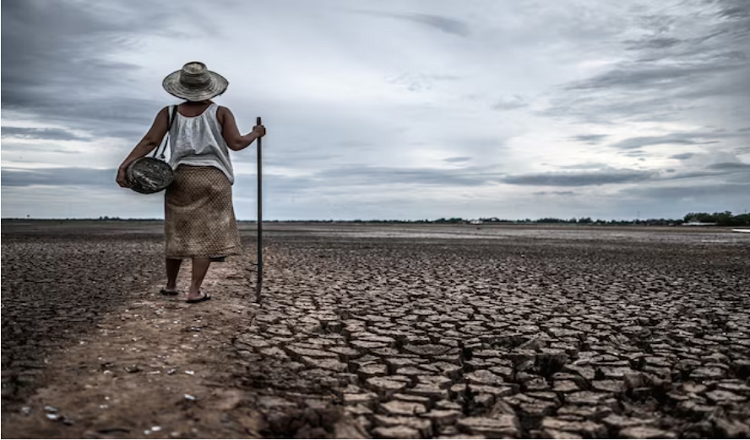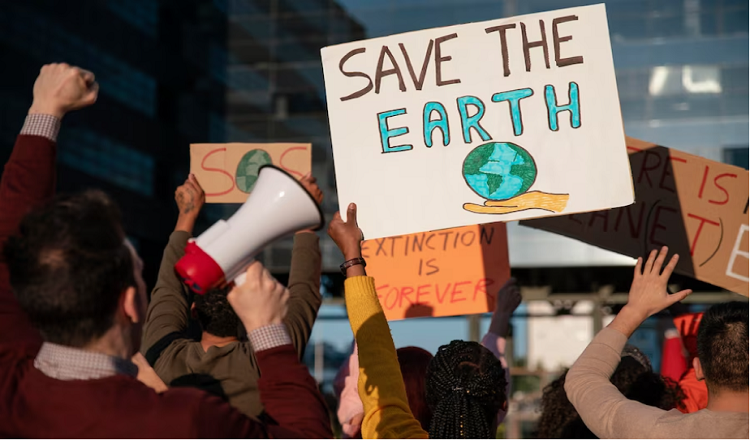The Impact of Climate Change on US Agriculture Examining the Impact of Droughts, Floods, and Extreme Weather on Crops and Livestock
The subject of climate change is no longer up for discussion or conjecture. Whether we like it or not, it is a truth that we all must accept. Agriculture is among the most severely impacted sectors of the environment as a whole by climate change. One of the world’s top agricultural producers, the US is already seeing the effects of climate change on its crops and cattle. The impact of droughts, floods, and other extreme weather events on farmers’ livelihoods is substantial.
In this blog, we’ll examine how climate change is affecting US agriculture, focusing on how droughts, floods, and other extreme weather conditions affect both crops and cattle. We’ll look at the impact these weather patterns are having on rearing animals and growing crops, as well as the difficulties farmers are having adjusting to these changes. This article aims to shed light on how climate change is affecting the US agricultural sector and what steps might be taken to lessen its effects. So don your farmer’s hat and come explore with us how climate change is affecting US agriculture!
Droughts and how they affect crops
One of the most important climate-related dangers to US agriculture is drought. They are brought on by a lack of precipitation and excessive evaporation as a result of hot temperatures, and they can have a disastrous effect on crop productivity. Droughts induce soil erosion, lower agricultural yields, and increased plant stress, all of which have a negative impact on productivity and fertility. Since there are more frequent shortages of water and feed, the consequences of drought may also affect the productivity of animals.
Droughts have become more frequent and severe in recent years in the US, with the 2021 drought in the West being one of the worst on record. Several crops, including corn, wheat, and soybeans, have been harmed by this drought, which has increased costs and decreased yields. The drought in California has also resulted in considerable water allocation cuts, which have an impact on fruit and vegetable output.
Farmers are coping with drought conditions in a variety of ways, such as by growing drought-resistant crops, utilizing water-saving irrigation methods, and conserving water. Farmers can also take measures to lessen the effects of the drought, such as using soil conservation techniques, minimizing tillage, and enhancing the health of the soil to hold onto moisture. Farmers may contribute to ensuring the sustainability of their businesses through these actions, even in the face of deteriorating drought conditions.
Floods’ effects on livestock and crops
Another major concern associated with the climate is flooding, which has a substantial impact on US agriculture. Flooding and excessive rain can harm crops, lower harvests, and result in livestock losses. Floodwaters can also deplete soil nutrients and create soil erosion, which can reduce crop productivity. Flooding can also deteriorate equipment and infrastructure, making it more challenging for farmers to do their business.
In the US, flooding has become more frequent and severe recently, with several regions experiencing record-breaking rainfall and flooding occurrences. For instance, the 2019 Midwest floods severely harmed crops and cattle, costing farmers millions of dollars in revenue. The floods also resulted in the loss of livestock, destroyed farm structures, and equipment in addition to crop destruction.
Farmers face a big difficulty when dealing with flood damage, therefore planning is essential. Farmers can take precautions to lessen their risk of flood damage by utilizing elevated or mobile infrastructure, growing cover crops, and constructing levees. Farmers can also collaborate with their neighborhood groups to create disaster response plans and flood preparedness measures. Farmers may assist safeguard the sustainability of their operations in the face of rising flood hazards by taking proactive measures.
Extreme weather conditions and how they affect agriculture
Hurricanes, tornadoes, and other extreme weather phenomena pose serious dangers to US agriculture. These occurrences have the potential to significantly harm infrastructure, livestock, and crops, with long-lasting effects. For instance, heatwaves can stress crops and diminish yields, but hurricanes and tornadoes can directly harm crops and livestock.
Extreme weather events have become more frequent and severe in recent years in the US, with hurricanes like Harvey and Irma costing billions of dollars in damage to livestock and crops. Heatwaves have also become more frequent, with the 2021 heatwave in the Pacific Northwest seriously harming crops like cherries and blueberries.
Farmers are adapting to extreme weather in a variety of ways, including using technology to monitor and predict weather patterns, planting crops that are more tolerant of extreme conditions, and using irrigation and soil management strategies that save water and lessen stress on crops. Farmers can also improve infrastructure and put emergency response plans in place to lessen the effects of extreme weather events. Farmers may safeguard the sustainability of their enterprises in the face of rising risks from extreme weather by being proactive.
Crop disease and climate change
Crop disease frequency and transmission are significantly impacted by climate change. Climate-related factors such as rising temperatures, altered rainfall patterns, and others can foster the development and spread of plant diseases. Additionally, modifications in the frequency and severity of weather phenomena can alter plant growth cycles, weaken plants, and increase their susceptibility to disease.
Climate change is already having a variety of effects on crops and livestock in the US. For instance, rising temperatures are helping pests and illnesses like citrus greening proliferate, while dry circumstances are making fungal diseases more common in crops like corn and wheat.
Farmers face a huge problem when dealing with crop diseases, and preventive is essential. Using disease-resistant crop varieties, applying crop rotation and other soil management methods, and employing integrated pest management strategies are just a few of the efforts farmers may take to lower the risk of disease outbreaks. Additionally, farmers can collaborate with academics and extension specialists to track disease outbreaks, respond to them, and build plans for adjusting to climate change. Farmers can secure the viability of their enterprises in the face of rising disease risks by acting proactively.
Soil health and climate change
In the US, climate change is significantly affecting the fertility and health of the soil. Increased erosion, nutrient depletion, and soil compaction can all have a negative impact on the health and fertility of the soil. Rising temperatures, altered rainfall patterns, and other climate-related issues can also have these effects.
In recent years, climate change has had a range of effects on soil health. For instance, more frequent flooding and strong rainstorms can result in soil erosion and nutrient loss, but dry weather can increase soil compaction and decrease soil organic matter.
Farmers face a big difficulty in dealing with diminishing soil health, but there are things that can be taken to make it better. These include employing cover crops and other soil-building strategies, implementing conservation tillage practices, and implementing precision agricultural technologies that can assist farmers maximize nutrient and water utilization. Additionally, farmers can collaborate with researchers and extension specialists to create and put into practice soil health management strategies that are customized to their particular growing environments. Farmers may safeguard the sustainability of their enterprises in the face of growing climate-related issues by taking proactive measures to maintain soil health.
Conclusion
Climate change is significantly affecting US agriculture, and farmers are dealing with a variety of difficulties as a result. Farmers are dealing with a variety of climate-related issues that are endangering the viability of their businesses, from droughts and floods to extreme weather phenomena and diminishing soil health.
There are a number of actions that can be performed to lessen the effects of climate change on US agriculture. Promoting resilient agricultural practices that can help farmers adapt to changing conditions, funding research and development to create new crop varieties and technologies, and supporting laws that support climate mitigation and adaptation measures are a few examples of these.
In the end, farmers, policymakers, researchers, and other stakeholders will need to work together to address how climate change is affecting agriculture in the US. Working together, we can make sure that despite the many difficulties brought on by climate change, US agriculture is resilient, sustainable, and productive. To protect our agricultural industry for upcoming generations, action must be taken right away.
Read More You May Like:














Post Comment